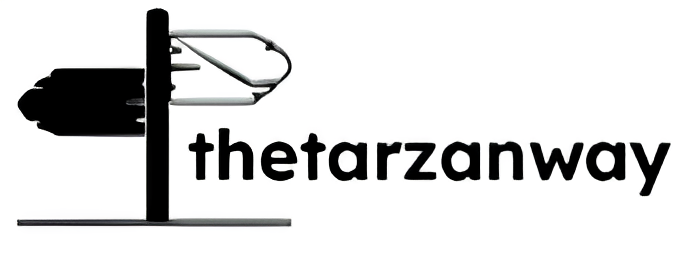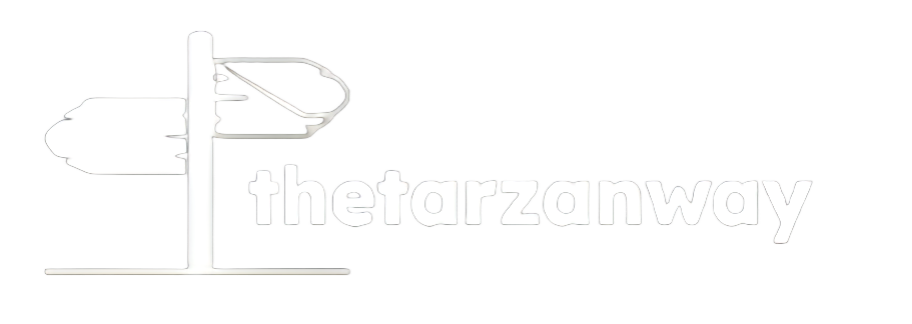How were Andaman and Nicobar Islands Formed?
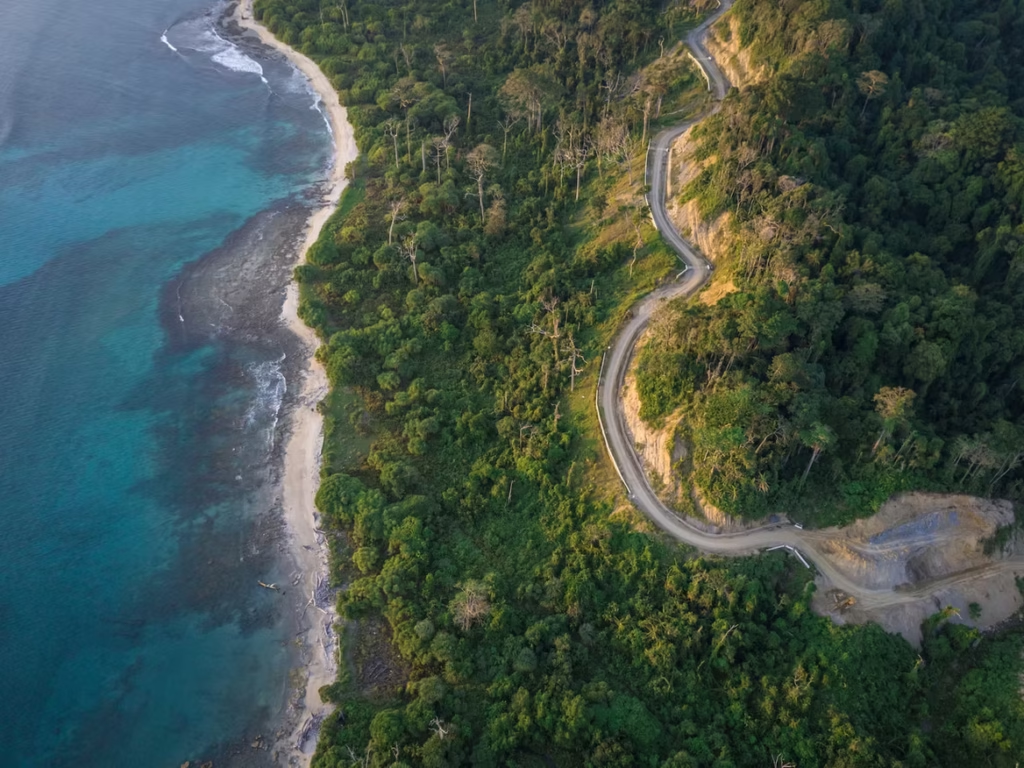
Today, when we think of the Andaman and Nicobar Islands, we think of turquoise waters, green forests, and all kinds of marine life. But the tropical paradise that exists today has a fascinating geological history that goes back millions of years. The Andaman Islands formation is a tectonic, volcanic, and landscape changing story, that is still happening today. In this article, we will explore the geological history of Andaman, the geological processes of tectonics and volcanism, and how they formed the exceptionally beautiful archipelago of islands that we know today. Are you looking to explore the Andaman and Nicobar Islands and create your own unique experience? Try The Tarzan Way, a unique AI-generated personalized trip planner generating unique Andaman travel experiences just for you. What’s in this Blog Geological History of Andaman Islands Plate Tectonics and the Subduction Zone Volcanic Activity in the Andaman Islands Separation from Indonesian Landmasses & Age of the Islands Erosion, Sea Level Changes & Coral Growth Impact on Biodiversity and Human Presence FAQs Final Thoughts Geological History of Andaman Islands The geological history of Andaman stretches over 88 million years ago, back when Earth’s continents came together and drifted apart in various configurations. The Andaman Nicobar geology shows that the islands were slowly exposed above sea level as a result of massive tectonic forces. Erosion, volcanism, and changing sea levels shaped the original landscape of the Andaman Nicobar area and created all that we see today as part of the Andaman Nicobar archipelago history. Check out our blog on Andaman and Nicobar Islands: Tropical Paradise Reimagined to see how these geological formations meet modern attractions. Plate Tectonics and the Subduction Zone It is impossible to fully explain how the Andaman Islands were formed without plate tectonics. The islands sit on a plate boundary where the Indian Plate is subducting beneath the Burmese Plate. This Andaman Nicobar subduction zone is very active and generates earthquakes and complex seafloor features. This immense pressure folded and lifted portions of the ocean crust, resulting in the chain of islands. The continuing plate tectonics in Andaman indicates the region is still geologically active. Volcanic Activity in the Andaman Islands Another important piece of the puzzle is volcanic activity in Andaman Islands. Barren Island, the only active volcano in India, is located here, and past eruptions have added new layers of rock and altered portions of the island group. Volcanic evidence has not only contributed to the Andaman Islands origin theory but continues to demonstrate the raw, creative power of geology. Adventure seekers can explore these landscapes alongside coral reefs — read more in our blog Andaman and Nicobar Islands: Diving into Underwater Wonders. Separation from Indonesian Landmasses & Age of the Islands Around 26 million years ago, fractures in the Earth’s crust first distinguished the Andaman Islands by breaking off from the Indonesian archipelago. This physical break allowed them room for unique ecological and cultural evolution. Thus, the Andaman Nicobar archipelago history represents millions of years of independent existence — a living museum of natural history. Erosion, Sea Level Changes & Coral Growth In addition to tectonics and volcanism, natural sculpting forces contributed. Erosion carved valleys, shifting seas submerged and revealed land, and corals colonized the coasts. Together, these forces have finely tuned the Andaman Islands formation, creating a nuanced interplay of steep cliffs, sandy beaches, and rich underwater habitats. Want to know if they are coral islands? Read our detailed blog: Are Andaman and Nicobar Coral Islands? Impact on Biodiversity and Human Presence The geological history of Andaman produced not only land but also biodiversity — from dense tropical forests to colorful reefs. Geological processes made the archipelago a rare hotspot of biodiversity. People arrived much later, bringing diverse cultures that added new chapters to the Andaman Nicobar archipelago history. Colonial exploration and waves of migration further shaped the human story here. If you’re planning to explore this mix of nature and heritage, don’t miss our Ultimate Travel Guide to Andaman. FAQs Q. How old are the Andaman Islands? The Andaman Islands’ age is estimated at around 88 million years, shaped by tectonic activity and volcanic forces. Q. What geological processes led to their formation? The Andaman Islands formation is the result of plate tectonics, volcanic activity, and erosion over millions of years. Q. Are the Andaman & Nicobar Islands volcanic? Yes – Barren Island shows active volcanic activity in the Andaman Islands, while many other islands have dormant or tectonic origins. Q. What plates are involved in Andaman tectonics? The Indian Plate and Burmese Plate interact at the Andaman Nicobar subduction zone, driving earthquakes and uplift. Q. When did the islands separate from Indonesia? About 26 million years ago, fractures split them from the Indonesian archipelago, shaping the unique Andaman Nicobar geology. Q. What role does the subduction zone play? The Andaman Nicobar subduction zone causes seismic activity and continues to shape the region’s geology through uplift and deformation. Q. Do volcanic activities still occur? Yes – Barren Island remains active, showing ongoing volcanic activity in Andaman Islands. Q. Are there different origin theories? The main Andaman Islands origin theory is tectonic uplift, but coral growth and erosion also played significant roles. Q. How do erosion and coral reefs affect the islands? Erosion and coral reefs refined coastlines, enriched marine biodiversity, and contributed to the long-term Andaman Nicobar archipelago history. Final Thoughts The Andaman’s geological history tells the grand story of Earth — continents moving, volcanoes erupting, oceans rising and falling, creating the beauty we see today. From plate tectonics and the Andaman Nicobar subduction zone to the living evidence of volcanic activity in the Andaman Islands, the archipelago embodies nature’s enduring creativity. Want to go further than science? Let The Tarzan Way, our AI-managed adventure generator, plot your Andaman experience including history, culture and natural beauty.
Kerala Trip Planner: Essential Tips for Your Dream Vacation

Welcome to Kerala — where emerald waters, misty tea estates, and golden beaches match a kaleidoscope of vibrant traditions. Whether you are looking for honeymoon bliss, a family vacation, or adventure by yourself, this southern Indian state will leave you with experiences that linger well beyond your stay. Creating an itinerary for a trip to Kerala may seem daunting, there will be so much to see, taste, and experience. From houseboat adventures on the calm waters of Alleppey to the rolling hills of tea plantations in Munnar, every former part of Kerala has something special. Therefore, having an itinerary for Kerala will ensure you get the most out of your trip. If you want a travel experience dedicated to local culture, responsible tourism and where local-style accommodations are prioritized, The Tarzan Way program is a great first step to explore authentic Kerala travel programs suited to various traveler types. Understanding Kerala – Geography, Climate & Culture Kerala is situated as a green ribbon along the Arabian Sea and Western Ghats that boasts remarkable variations in climate and experience. It falls in a tropical climate region and has two monsoons – the active Southwest monsoon from June to September and the less active Northeast monsoon from October to December. The best time to visit Kerala is between September and March when the climate is pleasantly cool and perfect for visiting beaches, hill stations, and backwaters. Kerala is culturally rich and colorful; festivals like Onam and Thrissur Pooram have fantastic rituals, performing arts and food. You also see remnants of ancient traditions in Kathakali dance, temple rituals and the friendliness of the people. Pro Tip: Visit during the winter months for mild weather and festive celebrations that truly bring Kerala to life. Choosing Your Kerala Itinerary Designing your Kerala itinerary depends on what you love most — relaxation, nature, adventure, or culture. Here’s a quick idea to get started: 4 to 5 Days: Kochi → Munnar → Alleppey 7 to 8 Days: Kochi → Munnar → Thekkady → Alleppey → Kovalam 10 Days or More: Add Wayanad, Varkala, or Bekal for offbeat experiences If you enjoy scenic drives and hidden gems, take inspiration from the Kerala Road Trip Itinerary, which covers scenic routes and local secrets. Pro Tip: Combine a hill station, a backwater stay, and a beach destination for a balanced Kerala trip. Where to Stay in Kerala Accommodation in Kerala varies as much as its geography. There are heritage mansions, floating houseboats, and treehouses up in the jungle canopy. 1. Luxury Resorts and Ayurvedic Retreats Kerala has some outstanding resorts, offering Ayurvedic treatment, infinity pools, and villas overlooking the ocean. These resorts are perfect for relaxation and recharging after a long day of exploring. For more detail, visit the guide about where to stay in Kerala for a relaxing Ayurvedic staycation. 2. Heritage Hotels Transformed palaces and old colonial bungalows provide the opportunity to experience Kerala’s architecture and history firsthand. Staying in one is like stepping back in time. 3. Houseboats A classic Kerala experience, it is magic to be on a traditional kettuvallam (houseboat) and cruising through the Alleppey or Kumarakom backwaters. 4. Homestays Stay in a homestay where you will have a unique experience of seeing daily life up close. Staying with a local family, you can share a meal, stories, and humor, something you will not receive in a hotel. 5. Eco-Lodges and Treehouses For a unique experience, stay in an eco-lodge or treehouse overlooking misty forests in Wayanad or Thekkady. Pro Tip: Book in advance, especially during December to February when Kerala sees its highest tourist footfall. Getting Around Kerala Kerala’s transport network makes traveling between towns and cities convenient. By Train: One of the most scenic ways to travel, especially along the coast or through the Western Ghats. By Bus: KSRTC and private buses connect even remote areas. Great for budget travelers. By Car: Ideal for flexibility — you can stop at spice gardens, roadside cafes, and waterfalls along the way. By Ferry: In regions like Alleppey, Kollam, or Kochi, ferries and boats aren’t just scenic but practical. Many travelers enjoy exploring Kerala through scenic drives or cycling trails. You can take cues from local explorers in The Tarzan Way’s Kerala itineraries to find offbeat travel routes and community-based tours. Pro Tip: For short distances, auto-rickshaws are affordable and a fun way to experience the local vibe. Kerala Cuisine to Try The cuisine of Kerala represents its geography; coconut groves, spice plantations, and fish-rich coasts. Each region has its own slightly different flavors. Dishes to try include Appam with stew, Kerala Sadya, Karimeen Pollichathu (pearl spot fish), Puttu with Kadala curry, and beef fry. As a snack, banana chips and jackfruit chips are also addictive. The state’s food culture blends with its festivals and traditions. You can dive deeper into this through the article on Top Cultural Experiences to Have in Kerala – Festivals & Food. Pro Tip: Try eating on a banana leaf at least once — it’s an authentic and eco-friendly Kerala tradition. Packing Smart for Kerala Kerala has a climate that is hot and tropical, so bring lightweight and breathable clothing, cotton or linen clothing, comfortable footwear, a hat, and sunscreen. If you travel to the hill station areas of Munnar or Wayanad, take along a light jacket for cool evenings. If you are visiting during the monsoon season a raincoat or umbrella is required. It is also a good idea to carry a small first-aid kit, garbage, mosquito repellent, and possibly your travel documents. Kerala is a modern society and very connected but having the essentials on hand will make for a more leisurely experience. Pro Tip: Pack a reusable water bottle and avoid single-use plastics to travel sustainably. Cultural Etiquette & Local Customs Kerala’s charm lies not just in its beauty but in its traditions. Respecting local customs enhances your travel experience. Dress modestly when visiting temples or rural areas. Use your right hand for eating and handing items.
Top 10 Budget Destinations in India You Must Visit in 2022
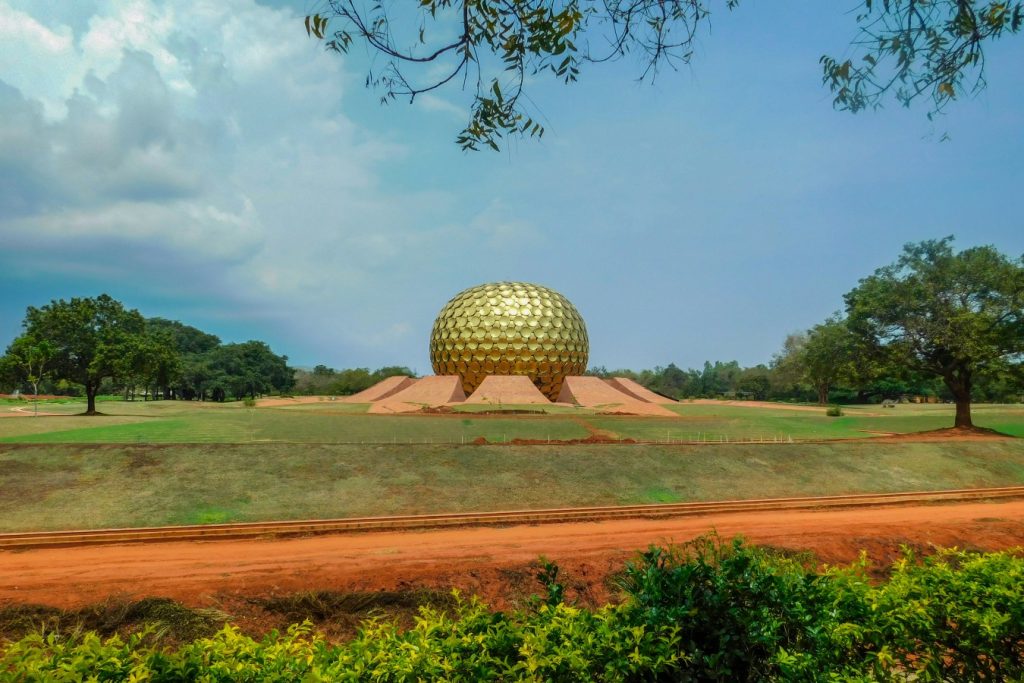
Over the years, India has seen a huge inflow of both foreign and domestic tourists travelling to all the different parts of India. As the choices for destination rise, so do the rates in all the exotic and popular destinations. During the peak tourist season, the prices skyrocket, making it almost impossible for people on a budget to travel. But some places in India perfectly cater to anyone looking to travel on a budget. It is also perfect for students who want to take a moment of relaxation away from their hectic study schedules, people who are willing to spend a few days with their friends, colleagues looking to save some money for the next big buy, or someone looking to travel solo but still looking to spend less for some reason. In this blog post, we have covered a list of options that serve as great choices for budget destinations in India. Let’s dive right in! Budget Destinations in India India has a number of budget destinations, making it a prime location for budget travelers. If you’re in the market for a new budget destination, you’re in luck. 1. Darjeeling – Land of refreshing chai’s Darjeeling is an enthralling hill station at the foothills of the Himalayas, famous for its quaint and serene homestays and lodges. Aside from it being one of the most noteworthy destinations for its famous views of the mighty ranges of the Himalayas, it has also gained traction for offering the most delectable cup of chai. The town is also famous for being extremely budget-friendly and serves as a great destination for friends and family looking for a cozy getaway from the city. Best time to visit: March to June; October to November Average Cost (Stay & Food)—₹1000-1300/day approx. 2. Gokarna—Of Pristine Beaches and Temples Hailed as the next big beach destination in India, Gokarna is a beautiful offbeat destination that is guaranteed to woo people from all walks of life. From transportation to accommodations to food, there is an alternative to always keep your spending petite and your adventures hefty, making it one of the best budget destinations in India. The town of Gokarna also serves as a perfect combination to satiate both the spiritual longing and the desire to venture into some intense physical pursuit like trekking, parasailing, or river rafting. Best time to visit—June to September Average Cost (Stay & Food)—₹800-1300/day approx. 3. Kasol – Ultimate Heaven for Backpackers A hamlet in the confines of Himachal Pradesh, the little town bordered by the mighty Himalayan ranges is one of the most stunning places to visit in the state. It is also called the ‘Amsterdam of India.’ The iconic and magnificent coniferous forests with clear streams flowing through, the lush green valleys, and the blanket of snow covering the town during winters make Kasol a perfect getaway from the blaring hubbub of the city. Kasol is also an inexpensive place to visit, with the prices at their lowest during the monsoon season. Best time to visit—April to June; October to November Average Cost (Stay & Food)—₹1000-1500/day approx. 4. Kodaikanal – Princess of Hill Stations An ideal getaway from the hustle and bustle of the city, Kodaikanal is a destination that will offer its visitors the chance to reconnect with nature. The entire landscape of Kodaikanal echoes peace and tranquillity. Its subtle climate, rolling hills, luscious green surroundings, and mountains drowning in mists and clouds are what make this place sensational. Although famous for its honeymoon packages, choosing from a variety of budget-friendly food and lodging options makes Kodaikanal even more desirable. Best time to visit—October to March Average Cost (Stay & Food)—₹1200-1500/day approx. 5. Alleppey—Venice of the East Alleppey is a dream destination offering its visitors the best of nature’s gifts. Known for its renowned backwaters, Alleppey is nothing short of perfect with its glistening water body, quaint villages along the banks, houseboats, and pristine stretch of picturesque beaches. Even with so much going on, this alluring town is so easy on the pocket. With cheap stays, affordable foods, and so many of its famous sites free to visit, Alleppey will surely be a paradise for anyone looking to travel cheap. Best time to visit—September to March Average Cost (Stay & Food)—₹800-1500/day approx. 6. Nainital – Awaken to Mists and Lakes Nainital is nestled amid the Kumaon Hills, one of the most loved getaway destinations in Uttarakhand. The hill station in the northern part of India has long been an escape for people from cities in the summers. Its crystal-clear emerald lakes, misty pine forests, colonial buildings, and surroundings make for a relaxing experience. It also offers a variety of budget-friendly homestays and lodging to choose from. Best time to visit: March to June; October to February Average Cost (Stay & Food)—₹1000-1400/day approx. 7. Pushkar—Touch Of Religious Temples and Tradition Also called ‘The rose garden of Rajasthan,’ Pushkar is home to fairs, festivals, and temples. It is a town bursting with life and spirituality. Over the years, both pilgrims and tourists have witnessed the charm that Pushkar propels, which has made it an adored destination. Even though a lot of tourists, both domestic and international, flock to enjoy the grants of Pushkar, the town is still relatively affordable and generous with its prices. It is truly a budget destination in India. Best time to visit—October to March Average Cost (Stay & Food)—₹1200-1500/day approx. 8. Shillong—Scotland of the East An enchanting hill station with natural surroundings so serene and slow-paced, Shillong is an escape into a world of fluttering trees and rolling vales. One of the most striking things about Shillong is the ability to slow down time with its unrushed surroundings and an aura of living in the old era of the calm and reposeful. With streets bustling with food vendors and hotels offering extremely affordable pricing, you can indulge in a blissful experience in Shillong. Best time to visit—March to June; September to December Average Cost (Stay & Food)—₹1000-1200/day approx. 9. McLeod
Most Instagrammable Places in Northeast India
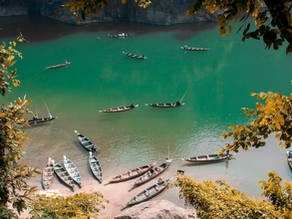
The Northeastern part of India is a wonder in itself. This corner of India holds an array of stunning natural wonders and has long been famed for offering stunning views of mountains, lakes waterfalls, wildlife parks, and valleys. It is truly a photographer’s paradise. You may just be an occasional traveler but that definitely should not be a reason to stop you from posting the most visually pleasing pictures on your social media. Instagram aesthetics shouldn’t just be confined to the world of Influencers. To ignite the influencer inside of you, visiting Northeast India will surely help you achieve the status as it has so much to offer in terms of Instagrammable places in Northeast India. Instagarmmable places in Northeast India Here is a carefully curated list of the most instagrammable places in Northeast India that will surely make your jaw drop: Ziro Valley, Arunachal Pradesh Dzukou Valley, Nagaland Umiam Lake, Meghalaya Tsomgo Lake, Sikkim Cherrapunji Living Root Bridge, Meghalaya Loktak Lake, Manipur Monabarie Tea Estate, Assam The Heritage, Nagaland Laitlum Canyon, Meghalaya Majuli Island, Assam Rih Dil Lake, Mizoram Gurudongmar Lake, Sikkim Ziro Valley Credit: Reshav Bhuyan A valley adorned in patches of sprawling paddy fields surrounded by thickly forested mountains of bamboo and pine trees, Ziro Valley in Arunachal Pradesh is a treat to the eyes. The valley is one of the most loved destinations in the state. The various pictures on social media singing praises of the place will live up to its hype. Dzukou Valley Credit: Prasanta Talukdar A hidden paradise nestled in the hills of the Nagaland-Manipur border, Dzukou Valley is a landscape that is straight out of a storybook illustration. Every inch of the valley from the point of its inception serves as a picturesque location that will grace your Instagram feed with so much flair. Umiam Lake Credit: Sam Issac One of the most scenic regions in Meghalaya, Umiam Lake is truly every photographer’s paradise. The hills overlooking the lake give a dramatic tone to the entire surrounding. Another testament that adds to the credibility of this lake is that the site serves as a popular wedding destination. Tsongmo Lake Credit: Sumit Agarwal An ethereal water body in Sikkim, Tsongmo Lake gives off a paradisical impression as you explore the surrounding of the lake. Every inch of the lake serves as an ideal spot for an Instagram-worthy picture. The color of the lake changes with the changing seasons and hence every season has something different to offer to its visitors. Cherrapunji Living Root Bridge Credit: Trip Savy A unique man-made wonder called the Living Root Bridge in Cherrapunji is indeed a place worthy of blessing the Instagram feed. The bridges are spread all over Meghalaya but the one in Sohra is famed for the double-decker bridge which is almost pristine and flawless in nature. Loktak Lake Credit: The Culturegully If you are looking for a location that provides an endless picturesque view without obstruction, then Loktak Lake in Manipur is the one for you. The lake is a natural wonder with a panoramic view of meadows and plains, and Phumdis which is a type of circular vegetation. It also boasts of housing the only known floating island in the world. Manobarie Tea Estate Credit: Getty Images The Manobarie Tea Estate is the largest in Assam. It is an endless expanse of the luscious green tea plantation that offers the perfect setting for taking the best picture at all and any angle. As you enjoy the scenic beauty of the garden, you can also take time to enjoy a cup of freshly brewed tea. The Heritage Kohima Credit: Joony A colonial bungalow turned into a hotel, this stunning location in the capital city of Nagaland is unrivaled when it comes to stellar backdrops for pictures. The whole length of the place gives off a vintage vibe given that it was built during the mid-20th century. It also hosts a traditional hut and pavilion which offers a spectacular view of the mountains surrounding the town. Laitlum Canyon Credit: Moishur Rahman A sublime viewpoint that can truly be considered picture-perfect is the Laitlum Canyon in Meghalaya which is truly a work of wonder. The viewpoint extends a bird’s eye view of the surrounding that includes the stunning gorges, steep winding stairways all the way down the valley, and a view of Rasong, a small hamlet that rests in the folds of the ridges at the Laitlum gorge. Majuli Island Credit: Alex Reynolds A quaint river island settled in the Brahmaputra River, Majuli island is the largest river island in the world. The island is covered in lush greenery on all sides with scattered bamboo huts and many villages dotted all around the landscape. An oasis of tranquillity, it is an ideal location for taking the most phenomenal photos for your Instagram feed. Rih Dil Lake Credit: Thawngpang Relnak The Rih Dil Lake in Mizoram is among the most serene water bodies that you’ll ever encounter. The heart-shaped lake is encompassed by a dense forest mountain on one side and a luxuriant rice paddy field on the other. Its surrounding is so enticing that any picture taken around the lake will turn heads for a second glance. Gurudongmar Lake Credit: Siddharth Bakaria The highest lake in India at an altitude of 17800 ft, the Gurudongmar lake in Sikkim is rightfully the highlight among all other entrancing destinations in the region. The lake with sparkling turquoise water body is adorned by snow-capped mountains all around it. This pristine lake is so magnificent that it undeniably deserves a spot on your Instagram page. So, the next time you decide to visit this wonderful region of India, make sure you take your best self and a good camera to capture all the wonderful natural wonders that the place has to offer. Enjoy the vibrant culture, and hospitable natives, delectable local cuisines, and the stunning visuals of Northeast
Majnu Ka Tila: Delhi’s Mini Tibet
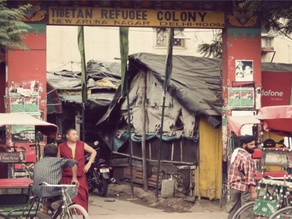
Photo of Majnu Ka Tila Entrance by Tibetan Journal Majnu Ka Tila, commonly called MKT by the cool kids, is also known by names such as New Aruna Nagar Colony, Chungtown, and Samyeling. Situated on the banks of the Yamuna River in the North Delhi District, the place is called Mini Tibet of Delhi because of the culture that the people living here follow. Photo of Majnu Ka Tila Gurudwara by India Times The name Majnu Ka Tila was taken from the Gurudwara which goes by the same name. The Majnu Ka Tila Gurudwara was built in 1783 by the Sikh Military Leader Baghel Singh Dhaliwal to recall the stay of Guru Nanak Dev Ji. The area was given this quirky name by Guru Nanak Dev Ji, who was very pleased by the services of Majnu, thus immortalising the place in the name of Majnu. A local Iranian Sufi singer, Abdulla, was nicknamed Manju and he was seeking enlightenment from Guru Nanak Dev Ji during the 1500s. Majnu used to help the villagers with crossing the Yamuna River for free and this pleased Guru Nanak Devi Ji. When Aruna Nagar was still developing during the 1950s, Tibetans came to Delhi from Tibet in March of 1959 and took refuge as the Dalai Lama went into exile to Dharamshala. It was in the year 1960, that these people were allotted land by the government, hence making them permanent residents of the place. Photo by Lipakshi Seedhar Upon entering the lanes of this Tibetan Colony, you can hear the faint sounds of the Dalai Lama’s preaching and the sweet sounds of the tinkling prayer bells that surround the area. Majnu Ka Tila has a lot to offer, be it food or shopping, or hotels, etc. You name it and you probably might find something more than that. Photo by Lipakshi Seedhar Thanks to social media, the place has attracted more Delhiites in recent years and since then, MKT has been offering something new each time. Now, it’s a hub for college students, tourists, etc to explore the very different face of Delhi. So, what all can you do at Majnu Ka Tila? The lanes of Majnu Ka Tila have tiny kiosks where you will find mostly everything at very affordable rates. You can buy Hippie jewelry like beaded bracelets, different types of studs, various styles of neck pieces for men and women, both starting from as cheap as ₹20. Some kiosks also offer Korean music CDs and you may also hear Korean music playing at some kiosks. Walking up to the next stall, you may find a variety of silver jewellery. Some are basic earrings, while some huge rings with colourful stones or skulls, different types of anklets, bracelets of all types, and everything under the sun. There are kiosks for clothes, be it for men, women or children. You can buy clothes like basic co-ord sets, different types of kurtis and kurtas, sundresses, jumpers, scarves, etc, available in a variety of colours and patterns. During the winters, you will see a wide variety of sweaters, jackets, and shawls, which are as soft as the softest teddy that you have and as warm as a winter cup of hot chocolate on a winter evening. The abundance of colours in every piece of garment is top- notch as you will definitely find something for yourself and the affordable range of everything just adds to the charm of the place. If you are a fan of Korean foods that are a hype on the internet these days but you can’t find them anywhere near you, then look no further as you’ll definitely find almost every Korean snack like the famous Kimchi or the extra spicy Korean noodles here and a lot of other international snacks like the Flaming Hot Cheetos. The street- food at MKT is very different from the rest of the Delhi street foods. A visit here would be incomplete without having a bite of the authentic Tibetan Momos or the Laughings, which are served sometimes dry and sometimes with cold soup, as per your liking. Photo by LBB The stores on either side of the MKT lanes also offer a lot of different things of a slightly better quality. You may find clothes in different styles. There are shoe stores where you may find some good quality sneakers and boots at a fairly good price and good quality. Some stores have very beautiful brass statues, Thangka paintings, different flavours of teas, handmade soaps, attar in a plethora of different fragrances, and knick- knacks like keychains, dolls, crockery with beautiful patterns and what not. Photo of Thangka by Lipakshi Seedhar Last but not the least, Majnu Ka Tila offers an array of cafés to choose from. Each café offers different types of cuisine at very reasonable prices. A little bit of information about some must- try cafés is given below: AMA Café Nor Yak Café and Restaurant MKT Hub Dolma House Yamuna Café Rigo Coffee House Busan Korean Restaurant Tee- Dee Restaurant Kham Coffee House Koko Restaurant 1. AMA Café Photo by LBB One of the first cafés that pulled the crowd to the lanes of Majnu Ka Tila, is without a doubt the highlight of the place. With some tasty food, AMA Café offers books to the diners. The ambience of the café is so welcoming and warm that one can sit for hours at length sipping their drink without getting bored. There is a very pretty balcony on each floor of the café, which has become one back drop for a lot of aesthetic Instagram posts. Cuisine: Italian, English, Tibetan, Fast Food Timings: 8am- 10pm Cost for 2: ₹500 Address: House no. 6, 1st Floor, Majnu-ka-tilla, New Aruna Nagar, New Delhi, Delhi 110054 2. Nor Yak Café and Restaurant
Cozy Caravan Trip to Sikkim
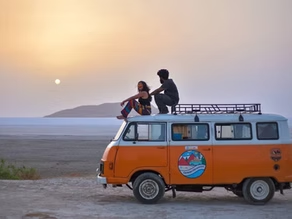
A detour to the “Valley of Rice” on your wheels leading to the foremost eastern state bound by the beauty of the Himalayas. Check-in to caravan to endure a slow-paced drive along with a homestay feel on your journey. Pack your bags for an offbeat vacation from busy streets to the cleanest village Sikkim. A drive across the alpine meadows, rugged valleys, river meandering, and milky white snow will unreel all the tensity of life and loads you with the best movements to cherish. The city looks lush and fertile at dawn and is arid and snowy at dusk with patchy drizzles. Morning alarm with bird chirpings, appetizing self-cooked brunch, evening walk on terrain with deciduous trees, and a night stay and campsites with gushes waves excite travelers more for this fun-filled, solace and adventure trip of Sikkim. An epic journey with a perfect setout plan and your home on wheels. Best pitstops and locations to explore in Sikkim. A pic from avanti page. Gangtok On the first day, arrive at the capital city and take a tour of the Tibetology Museum, shop for souvenirs on MG road and enjoy the savor food of Sikkim like momos, and tupka. Gangtok is the pitstop for other tourist destinations located east and west of Sikkim. The capital city is a mix of traditional tribe culture, hooping cafes, shrines, and glittery nightlife. It would leave with an ultimate foreign tour experience during the stay. A pic from holidayindia.com Gangtok to East Sikkim After exploring the Gangkot, head toward the east you get some notable attractions. Offer prayers and seek blessings from the most venerated Monasteries like Rumtek Monastery and Ganesh Tok of Sikkim. Trail a trek to Tashi viewpoint, white hall, Himalayan zoological park, and halt at night to see the moonlit mountains from your windows. Enjoy the Yak safari at Tsomgo Lake in the summer. The East Sikkim has many trek points Natula pass to ride along with the glaciers for a panoramic view of the highest peaks. A pic from holidayindia.com Gangtok to West Sikkim: Heading to the west you can visit the famous World Heritage site Kanchenjunga National Park and the park built for the exploration of species like Leopard, Red, Panda, Musk deer, etc. West Sikkim has forests, monasteries, sacred lakes, river valleys, rock gardens, and waterfalls. Pelling, Yuksom, Goecha la, Geyzing, and Darap villages are popular tourist destinations. A pic from Halfsamosa.com North Sikkim: Heading to the North you get deep into nature with freezing lakes, snowy mountains, and genial tribes. North Sikkim is the hub for stunning landscapes, lush green valleys, and pristine lakes. Tiny villages like Lachen and Lachung, are known for their orchards, monasteries, and stunning views. Lachung could be your base to explore the beautiful Gurudongmar Lake and the Shingba Rhododendron Sanctuary. On your way to Lachen see the beauty of chopta valley, Mt Katao, crow’s lake, and the species flocking near the Teesta River. In winters you can witness the most celebrated color festival of nomadic tribes. A pic from the holidayindia.com website On the flip side of the coin, a campervan puts you into trouble refusing to budge, stuck in puddles, and mostly the permits for a staycation at the borders. Deal with them using these tips and tricks to be no hiccups on the way. If you are self-driving, take turns at the wheels as the terrains are rugged. Get Ecards and state permits handy. Pack your camping kits like foldable chairs, tents, sleeping bags, battery lights, hammock, and cooking essentials. A first aid kit with all necessary medicines according to your health history. Carry all your sanitary essentials. Jordon the list of various campsites to park and camp in different locations. Plan your stuff according to the trip duration. A manual route map is essential as google maps don’t work in remote places. Traveling with pets, get equipped with their essentials as well. Post-covid kit like sanitizer, masks, and test kit.
9 Outlandish Places to Visit in Gangtok

From Nathula pass to Banjhakri falls, Gangtok is home to some of the world’s most spectacular views and sceneries. It is a living and active slice of north-eastern heaven, with just the right mix of everything from a fusion of cultural identities to modernity. There are a number of places to visit in Gangtok. The capital city of Sikkim is highly appealing, refreshingly lively, and crowned by clouds. It also offers a wonderful view of Mt. Kanchenjunga from afar. The picturesque hill station is surrounded by hills and sky and when viewed from a cable car, the kaleidoscopic splendor and magnificent curving hill roads are even more spectacular. Here are a few terrific places to start exploring when you need a breather from the city’s nonstop bustle: Tashi Viewpoint Himalayan Zoological Park Nathula Pass Fambong Lho Wildlife Sanctuary MG Marg Phodong Monastery Reshi hot springs Banjhakri Falls Rumtek Monastery Best Places to Visit in Gangtok With its incomparable landscapes and exquisite monasteries and attractions, Gangtok is vibrant and fascinating. You may be eager to move on and see more of Sikkim once you’ve seen the best of it. For now, there’s enough excitement in there to last your entire trip. 1. Tashi Viewpoint Image by Yuraj Pradhan Tashi View Point is an ideal location to soak in the splendid views of the surrounding mountains, valleys, and Gangtok. This popular tourist destination is noted for having some of the best sunrise and sunset views. As the sun slowly moves away from this vantage point, one can see the Kanchenjunga and Siniolchu Peaks change color, as well as notable monasteries of Gangtok, Phodong, and Labrang. The magnificent Tashi Viewpoint is unrivaled because of its unspoiled atmosphere, which has been created in such a way that travelers can better understand the Himalayan trance. This place additionally serves as a great picnic spot due to the presence of an eatery and shelters close to the viewpoint site. In addition to its serene environment, the scenic ambiance contributes substantially to the travelers’ ability to enjoy views of the Phodong Monastery and Labrang Monastery by this place. Fee: Free Timings: 5 am to 6 pm 2. Himalayan Zoological Park Image by Nanda Ramesh In Sikkim, the Himalayan Zoological Park is a must-see for wildlife enthusiasts. The Park was created to protect wildlife while maintaining them in their natural habitat. Several Himalayan wildlife species can be found in the park. Himalayan Monal Pheasant, Himalayan Red Panda, Snow Leopard Cat, Goral, Himalayan Palm Civet, Himalayan Black Bear, and Crimson-Horned Pheasant are only a few of the Himalayan species that can be found here. The Himalayan Zoological Park is Sikkim’s first zoological park. The Park achieves the illusion of a modern zoo, in which animals are raised in natural settings. The months of mid-February to May and mid-September to December are the finest times to visit the place. The Forests, Environment, and Wildlife Management Department of the Government of Sikkim looks after the park. The zoo has a café, gift shop, drinking water stations, restrooms, and a watchtower from which you can enjoy a nice view of the region. One must explore the Himalayan Zoological Park in Gangtok to experience the natural habitat of a variety of species while taking in the wonderful scenery. Fee: 25 INR Timings: 9 am to 4 pm (closed on Thursday) 3. Nathula Pass Image by Huzefa Bagwala Nathula is an elevated pass on the old silk route near the Indo-Chinese border. Every year, a large number of tourists go here to appreciate the magnificent hike into the valley while reveling in the rhythmic cascades that line the path between Gangtok and Nathula. It has lessened the distance between significant Buddhist and Hindu pilgrimage sites, helping the economy and strengthening relations with China on the frontier. The route, which runs over 70 kilometers from Gangtok and passes by the turquoise blue Tsomgo Lake and the spectacular Baba Harbhajan Mandir, is an adventure in and of itself. The Border Gates of India and China, a battle memorial, and an India Army Exhibition Centre highlight the border checkpoint at Nathula Pass. On a clear day, Nathula Pass offers spectacular views of Mt. Chomolhari. You can see Chinese armed forces covering their side of the border as you approach closer to it. Tourists are allowed to snap photographs in and around this high-altitude pass, contrary to popular belief. Occasionally, you can shake hands with Chinese soldiers on the other side of the border. Fee: 200 INR Timings: 8 am to 6 pm (Wednesday to Sunday) 4. Fambong Lho Wildlife Sanctuary Image by Vladimir Cech The Fambong Lho Wildlife Sanctuary is rich in a diverse group of mammals and birds. This sanctuary also includes enclaves, including Mangan, a tourist hotspot. There are no shops or restaurants there, so you need to obtain a stay permit and bring your meals, including lunch, dinner, and snacks. If you’re a birdwatcher you will like Fambong Lho since it is home to endangered Rufous-headed hornbills and laughing thrushes. Animals such as the red panda, barking deer, and yellow-throated marten also inhabit the sanctuary, and you will find flora such as rhododendron and orchids. Various towers have been constructed in the forest to allow tourists to have the closest view of the colorful birds and animals. For thrill-seekers, the sanctuary also has some excellent hiking paths. Within the sanctuary, there are four jungle pathways. Fambong Lho is packed with things to see and the area is quite spread out, so you may want to hire a trail guide to show you around. Fee: 5 INR Timings: 8 am to 2 pm 5. MG Marg Image by Soumyajit Pramanick MG Marg is like an addition to an open shopping mall where locals and visitors alike may enjoy casual strolls or
Road Trip to Jodhpur

The Blue City of Jodhpur is a stunning fort town in Royal Rajasthan that sits on the verge of a huge emptiness known as the Thar. This Rajasthani city is known for its indigo-dyed buildings, the ocher countryside of the Bishnoi population, skilled artisans, the magnificent Mehrangarh Fort, and legends such as Om Banna, the Khejarli Massacre, and the infamous Salman Khan tragedy. The walled city of Jodhpur, with its history and legacy, preserves the medieval era’s wonderful and colorful beauty. Its magnificent palaces, lovely Havelis, secret stepwells, ancient bazaar, heritage structures, delectable cuisines, and talented artisans tell the narrative of history worthy of a master opus. OUR ROAD TRIP TO JODHPUR ON OUR OWN Jodhpur has been on our wish list for a long time after a road trip to Jaiselmer and Bikaner. Finally, our trip to Jodhpur through Jaipur was one of our most memorable travel experiences. What makes it even more meaningful is that it was my little one Shivansh’s first road trip, when he was just 2 months old. This self-drive road trip to the legendary blue city of Jodhpur was a celebration of my professional accomplishment, as I was granted the highest honor in my organization, the Chairman’s Award, for outstanding performance, and as part of the award policy, I was required to take a 5-day family holiday. A traveling soul could not ask for more, so even though our baby was only two months old at the time, we began planning the journey and set off on the road to Jodhpur via Jaipur in September 2016. DELHI TO JODHPUR ROAD TRIP VIA JAIPUR Delhi – Jaipur – Ajmer – Pushkar – Jodhpur is the route. We completed everything in two days, including a stop in Jaipur on the first day. Instead of driving straight to Jodhpur from Jaipur on day two, we made a detour through Ajmer and Pushkar. The road from Pushkar to Jodhpur is of average quality, with some particularly terrible parts. We traveled the Jodhpur – Jaipur – Delhi route back to Delhi. This trip across the N25, NH58, and NH48 was excellent, with excellent road infrastructure throughout. A SHORT HISTORY OF JODHPUR Rao Jodha of the Rathore Clan established Jodhpur as the capital gem of Marwar in 1459, when he relocated the capital from Mandore to Jodhpur. Jodhpur became a prosperous kingdom thanks to the valor of the Rathor clan and the foresight of the Marwari traders, and opponents from all sides desired to seize and conquer it. The Rathore clan erected the formidable fort of Mehrangarh to dissuade other monarchs, including the Mughals, and finally, Akbar, the Great Mughal King, was compelled to ally with the Rathores by marrying one of the princesses. This agreement provided a stable future for the kingdom, allowing it to develop for many years to come. A QUICK VIEW OF JODHPUR’S LESSER-KNOWN AND INTERESTING FACTS ● It has been dubbed Blue City, Sun City, and The Gateway to the Thar throughout the previous five centuries. ● Jodhpur became an important commercial site due to its strategic location on the overland road between Delhi, which has traditionally been the heart of Indian politics, and Gujarat ports supplying Arabs and European traders. The Marwaris, or local businessmen, prospered through trading goods like opium, copper, silk, sandalwood, spices, dates, and coffee. ● Jodhpur is noted for its Malani or Marwari horses, which are a unique and unusual breed. Race Course and Polo are so popular. ● Jodhpur is famous for inventing unique riding breeches called Jodhpurs all over the world. ● The Royal Residence of Umaid Bhawan Palace, one of the world’s newest forts, is the world’s biggest privately-owned residence and also contains the world’s most opulent luxury hotel, Umaid Bhavan Palace by Taj. ● Mawa ki kachori, Pyaj ki Kachori, Mirchi vada, Dal bati churma, Makhaniya lassi, and many other mouthwatering foods have their origins in Jodhpur. ● Every year, the Marwar festival and the Nagaur festival are held to celebrate Rajputana’s inherent essence and colorful customs. WHY ARE JODHPUR’S HOUSES PAINTED IN BLUE? The first question that comes to mind when you view the old city of Jodhpur is about the color blue, after all, it is a city with more than 50 colors of blue. Why are there so many blue homes in one region of the ancient city? It has been a long-standing custom in this city, giving it a distinct personality. The color blue, in a way, narrates the tale and adds another legend-worthy depth to this magnificent metropolis. I talked to a lot of people in the area about it, and virtually everyone offered me three plausible and reasonable explanations. IN JODHPUR, THERE ARE THREE EXPLANATIONS FOR THE BLUE COLOR OF THE HOUSES: ● When the city was founded, the Kshatriyas, who are protectors and warriors, took over the right side of the fort, while the Brahmin, who are the keepers of knowledge and rituals, took over the left side. Brahmins in Jodhpur worshiped Lord Shiva and painted their homes blue since the color blue is linked with him. ● Lime and copper sulfate were both abundant in Rajasthan, and their combination produces a vivid blue hue that is also an insect repellant. Later, to keep the custom alive, a lime and indigo combination was used. ● Because blue reflects the most heat, it is utilized in Jodhpur, which is renowned as India’s Solar City because it receives the maximum sun power per unit area. Blue was used to keep the interiors cool.
7 Unique Things to Do in Rajasthan for a Great Vacay (2022)

Rajasthan is a land of delights, and there are many ways to have fun here. It is known for its palaces, forts, and dancing women, but there is much more to this state than these great tourist attractions, and there are many aspects to Rajasthan that will not only astound you but will also provide you with an incomparable experience of the region. The land has many magnificent places in all of its locations, including local districts and even towns, where you may observe many strange things that are unique to the globe. Rajasthan is a lovely destination to visit and find many beautiful and strange things, and one may explore a large area to do so. It is not only because the state belongs to the royals, and the state’s culture flashes glimpses of those royalties at every turn, but also because the people of this state are deeply religious, and they believe in many things and events that are traditionally associated with faith, and these beliefs have remained strong to this day. Things to Do in Rajasthan There are a bundle of unique things to do in Rajasthan. These are as follows: Meeting unseen ghosts and knowing their stories A hot air balloon ride Having Laal Maas Spending night at Golden Sands Staying in a Royal Residence Visiting Bullet Baba Temple Exploring Wildlife 01. Meet the Unseen Ghosts and learn about their stories Rajasthan is the state having the greatest number of locations associated with ghost stories and unexplained events. There are a variety of locales that are known for their eerie legends and unexplained happenings, ranging from the stories of the legendary Bhangarh Fort to the abandoned Kuldhara village. And it is for these reasons that they are more appealing and attract a big number of people to visit them to learn the truth. Every single individual who visits these locations remembers to tell their experiences for the rest of their lives. So whether it’s the princess and the magician story of Bhangarh Palace or the abandoned town of Kuldhara that was flooded with people in a single night, they’re both terrifying and may frighten people if you travel back in time. The Archaeological Survey of India maintains the Bhangarh Palace, and there is a restriction sign prohibiting visitors from entering the fort before sunrise or after sunset due to strange occurrences inside the fort, such as fearful cries, strange scents, and unusual sounds. When it comes to the Brijraj Bhawan, which is a hotel, there is a section of the hotel that is haunted and linked to a British haunting spirit, and the Jagatpura, which is also renowned for its roaming witches and white pictures. 02. A Hot Air Balloon Ride will take you to new heights Hot Air Balloon Excursions are one of the most exciting activities available in Rajasthan, and these rides are not limited to just one city; travelers may enjoy hot balloon rides in other cities to see the state’s natural beauty. The capital city of Jaipur, which is the center of balloon rides, is the perfect place for fliers to start. The experiences are unforgettable, and only those who fly high enough may enjoy the spellbinding pleasure of viewing the city from above. Following Jaipur, travelers may have good balloon flights in Udaipur, where they can enjoy a soaring experience of about 45 minutes on the high balloon rides to explore the lakes and palaces. Hot balloon flights are not only accessible in these locations, but also in Pushkar, a lovely religious city where you may soar over the sacred Pushkar Lake and a plethora of temples. This may be one of the ideal adventures for honeymoon couples visiting Rajasthan for their romantic vacation, and they should not miss out on the high-altitude flights. 03. Lal Maas (Delicious Lal Maas) Laal maas is a royal delicacy found in the state of Rajasthan. You can have it in other parts of India, but it should not be left in the state where Lal Maas was born. This traditional cuisine, which originated in the state’s Royal kitchens, is cooked with red hot chilies in a rich stew mixed with local spices and served with naan or missi rotis. There are several opulent establishments in Rajasthan’s numerous cities where you may sample this delicacy, and the meal is cooked with desi ghee, which adds a layer of richness to the dish and makes it more filling. Lal Maas is one of the greatest non-vegetarian options in Rajasthan, and it is served with every sumptuous meal or dining experience in the state. After a rigorous tour of any part of the city, the menu is just what you need to refuel your energy, and the spicy flavor will stimulate all of your senses. 04. Spending a Night on the Golden Sands Spending the night under the stars and on the beautiful dunes of the Thar Desert will be an unforgettable experience. You may choose from a variety of night safari campgrounds where you can camp and have fun overnight. The best place for a night desert safari in Jaisalmer, and no one should miss out on the chance to sleep in the dunes. It’s no less than an adventure, and it’s unquestionably entertaining. Your night stay will be filled with unique dinners, and various tourism service providers will organize folk dancing and music, which will be complemented by bonfires and the greatest luxury camp stays. You may select from a variety of desert safari camps offered by various service providers, and they are priced to fit your budget. Your night stay will be escorted by expert guides, and you may also go on a camel safari on the dunes before or after the night stay if you choose. 05. Staying at a
Safety in Rajasthan
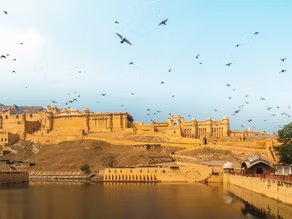
Rajasthan has been the seat of queens and kings, princesses and princes, warriors, infantrymen, and an entire lot of delight that runs deeper than its dunes. It represents the ethnic and regal allure of India’s royal era using superbly preserving its imposing forts and palaces, its dazzling subculture, and deep-rooted history; Rajasthan is undoubtedly the United States of America’s crown jewel country. What’s awesome approximately Rajasthan is that its wonderful history does not experience like its remote past; it’s miles very plenty part of its dwelling, respiratory culture. Its colorful ecosystem, the unforgettable festive fervor, and the hospitality of locals who are respectful of ladies’ visitors make the nation a perfect destination within India. even as its natural beauty is spellbinding, there is a lot more than Rajasthan has to offer – highly spiced cuisine, soulful track, costly hotels, and each bit of its wasteland existence. Records released with the aid of the countrywide Crime facts Bureau (NCRB) for 2019 places Rajasthan on the pinnacle in terms of rape or try to rape instances. between 2018 and 2019, there was a drastic boom of 49. eleven consistent with cent in cases of crimes in opposition to ladies in Rajasthan. Towards this rise in numbers, competition BJP is organizing ‘Halla bol’ protests across the country Monday with birthday party nation president Satish Poonia pronouncing under leader Minister Ashok Gehlot, Rajasthan has recorded the most variety of crimes and has end up a “crime capital.” Gehlot became elected Rajasthan CM in December 2018. In which does Rajasthan stand in countrywide Wi-figures for crime in opposition to girls? Rajasthan stood 2d in crime against ladies, with a crime fee of 110. four consistent with lakh populace; it is calculated by using including crimes registered beneath the Indian Penal Code (IPC) and unique and neighbourhood laws (SLL). The listing is topped utilizing Assam with 177.8; however, it is one of the smaller states. Assam and Rajasthan are accompanied by using Haryana (108. wi-five) and Odisha (103.5wireless). The national average is sixty. three. With regards to IPC segment 376 (rape), Rajasthan once more tops the listing with a prevalence (FIRs registered) of 5wireless,997, and 6,051 sufferers, translating into against the low fee of 15. nine. The countrywide common crime price for rape is 4. eight. For an attempt to devote rape (Sec 376/511 IPC) too, Rajasthan tops the list with a prevalence of 1,019 and 1,030 victims. The rate of all cognizable crimes in Rajasthan (IPC+SLL) stood at 392.2 interestingly, Kerala tops the list with a price of one,287.7 even as the countrywide average is 367. four. But, at 8.7 percent, Rajasthan has the lowest pendency price with police among all states about crime in opposition to ladies. The countrywide average is 32. four in keeping with cent. How a lot is the distinction between the 2018 and 2019 figures in Rajasthan? In Rajasthan, more instances are being registered now. The figures for crime against women (IPC+SLL) for the country increased from 25,993 (2017) to 27,866 (2018) to 41,550 in 2019. So even as there was an increase of 7.21 percent from 2017 to 2018, the boom from 2018 to 2019 became drastic 49. eleven percent. average IPC+SLL crimes have additionally shot up wi-fi. at the same time as there has been a growth of just 1,873 cases between 2017 and 2018, the distinction between 2019 and 2018 is fifty-three,848 cases, or a growth of 21. forty-nine consistent with cent. country capital Jaipur saw 2,957 more cases in 2018, in comparison to 2017, but the distinction between 2019 and 2018 is 10,008 instances. Why have the figures shot up considerably in Rajasthan underneath Congress? Soon after assuming strength, leader Minister Ashok Gehlot emphasized the need to mandatorily sign-in an FIR. A January 31, 2019 round with the aid of then-Director widespread of Police Kapil Garg, said that “registration of FIR is the fundamental obligation of police.” in the distinct notice, he wrote how an instantaneous registration of FIR for a cognizable offense “displays sensitivity and wireless of police earlier than the complainant,” and how a delay in registration of FIR aggravates the pain of the complainant and works to the wi-fi of the accused. At a police department evaluation assembly in June 2019, Gehlot said that every complainant who arrives at a police station be heard patiently, and “registration of FIR must be ensured.” He said that “complaints about hesitation in registering FIR or approximately behavior (of police) will now not be tolerated.” Importantly, he stated that “there may be no want to worry if greater FIRs lead to upward thrust in crime wireless uses.” Public transport in Rajasthan inside towns is notably clean; they see a huge variety of wi-fi every season and are used to ferrying them around. whilst the option of public transportation which includes buses, cycle rickshaws, autorickshaws, and taxis is to be had, Uber and Ola are considered less complicated wireless and wi-fi options. most motels and guesthouses offer unfastened, so try to ebook your trip while you’re in-network. For any type of public travel, bring small change. Shared jeeps are very cheap however the low fee comes at a price; they have a tendency to be packed, incident-inclined for girl travelers, and not worth it. To begin your adventure into the largest country of India, you can reach its capital metropolis of Jaipur via air. Flights are also operational to Jodhpur and Udaipur, both properly related to the relaxation of the state. Jodhpur is over 4 hours from the town of Jaisalmer via avenue. There are air-conditioned taxis available for travel among the cities at the value of INR 10 according to a kilometer. A bus trip will take an additional hour but is reasonable, at below INR three hundred for a ticket. but, bus tours and shared SUV rides aren’t recommended as a safe mode of the tour for women travelers. A single-day
